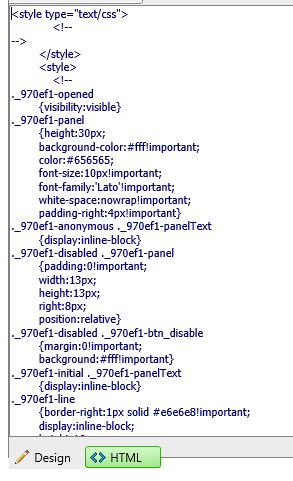Wiki Quick Tip: 10 fixes for building a robust #TNWiki article
When posting a new TNWiki article or after posting it, many people struggle to keep their article "stable"...
Stable meaning that the original article is getting out of control, losing the nice layout, for subsequent edits (yourself or any other editor working on it).
Let me provide you a set of quick fixes you should check, to avoid building up frustration...
Before we run through the tips, one major notice here: the Wiki platform and it's editor.
Just keep in mind, the Wiki platform has served for many years, but the old lady has some naughty features we can't circumvent, unless moving to another platform. Cope with it. The community team is working on the next gen platform. More news later
The major and most important tip is: double-check the HTML code.
Therefore, as mentioned in other TNWIKI blogs articles, better use an offline editor.
Actually for 2 reasons:
- Having an offline copy of your article text, just in case you lose online connection or the editor has a hiccup
- Offline editing is easier, smoother, faster, better to control.
So when diving into your article and double checking it, what should you look for?
- Fix the line breaks, <br> tags are breaking your article, in any variation <br style="...">
- Solution:
- clean the in-tag settings, do no use <br style="rubbish">,
- replace any <br> tag duplication (which typically happens with the online editor)
- replace all single <br> tags with a reverse paragraph tag </p><p>
- Solution:
- Use lists (numbered or dotted) instead of hard coding numbers or dashes
-Do NOT type
- 1. <space><space><your text 1>
- 2. <space><space><your text 2>
- 3. <space><space><your text 3>
Solution
- Use lists with <li> list tags (preceded by <ul> or <ol>)
- Avoid using spaces to align text blocks or indentation
- Solution:
- remove any duplication of " " (HTLM for space), so any combination of " " must be bulk replaced with " " (without double quotes)
- use margin style codes like: <span style="margin-left: 10px">
- Increment the margin setting for multi-level indents
- Solution:
- Use color names instead of RGB or HEX codes
- The Wiki only supports built-in table styles, any other style is not supported
- Use the table of contents tag [TOC] , instead of writing or building a TOC yourself
- Solution:
- use the [TOC] feature in code (by preference embedded in a <p>[TOC]</p> combination)
- More help here:
- Solution:
- Start and end you article with a horizontal line
- Solution:
- check the HTML
- first tag in the code = <hr>
- last tag in the code = <hr>
- Solution:
- Remove redundant layout settings. Following style settings might be added, manually or automatically, but you don't need them
- Solution:
- remove "background: white" style (a page is white by default)
- remove "color:black" style (text color is black by default)
- remove any "line-height" setting
- remove any special font-family settings
- use <code> tags (instead of <pre> tags)
- Solution:
- Remove any MS-Office tags and styles, MS Word is not the best choice for HTML editing...
- Solution
- remove any "mso-..." alike tags
- Solution
- Do the format stripper test: how stable is you article if you use the online Wiki format stripper. (It's not a hard coded rule, but the format stripper greatly helps stabilizing your article)
- Solution
- Strip css elements
- Strip font elements
- Strip span elements
- Check the Word format stripping, but chances are high that it kills your layout just a bit too far.
- Solution
There are many more checks to make your Wiki article rock solid, we will discuss in other articles, but if you get these 10 quick fixes right, you already have a important head start in the right direction.
See also
Comments
- Anonymous
April 03, 2018
Very useful Post Peter,Thanks for sharing - Anonymous
April 04, 2018
Thanks for sharing! great tips ;-) - Anonymous
April 07, 2018
Again nice tip and informative post from Peter. Thank you for this :)

